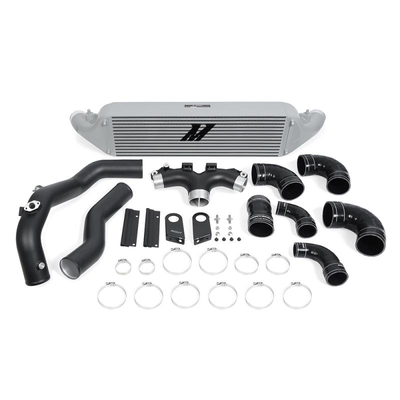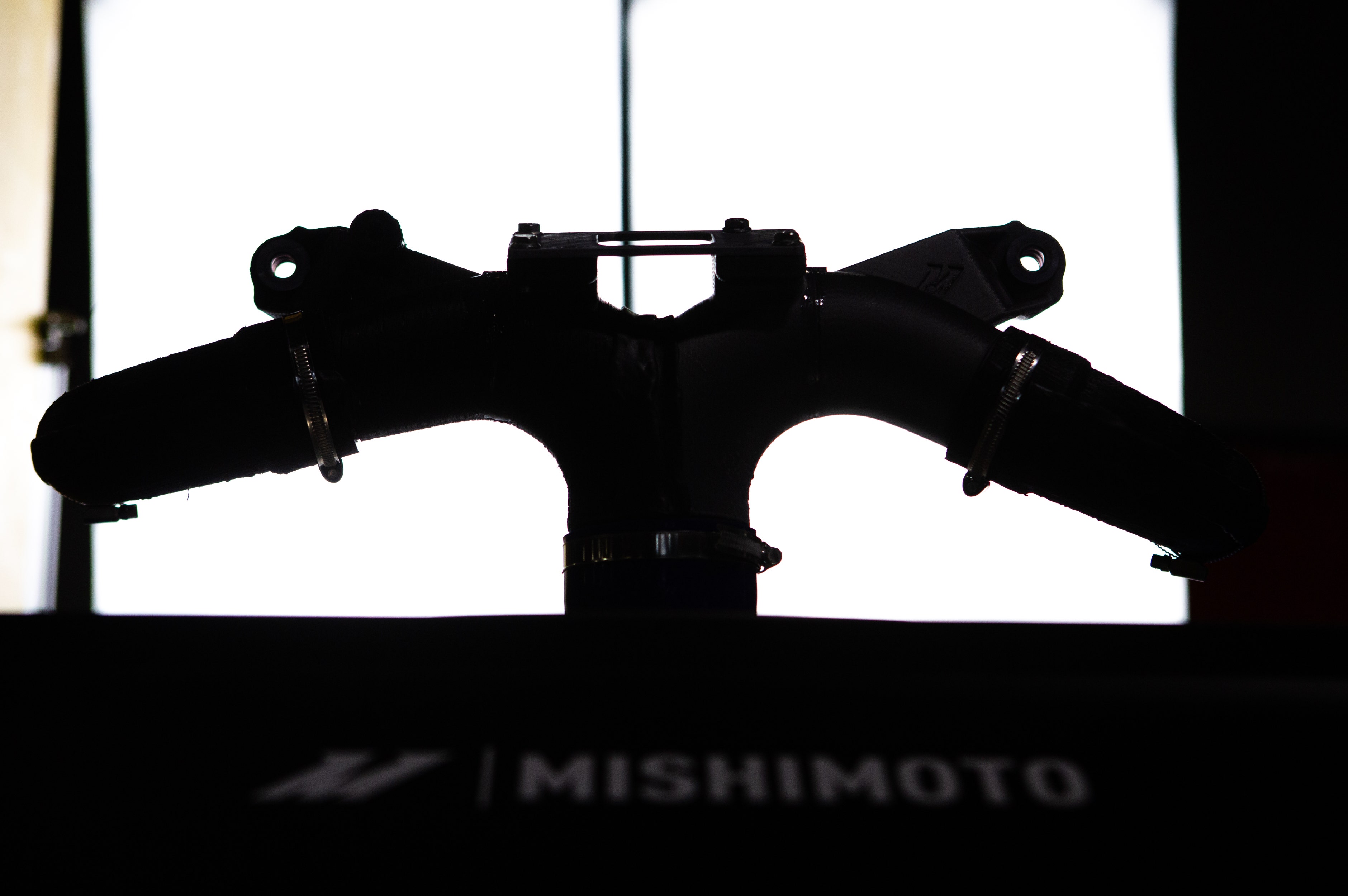
Float Like a Butterfly, Sting like a Kia? - Performance Intercooler Kit R&D, Part 3 - Intercooler Piping Design Plans
Like the Stinger's launch, we're also making our own sizable splash and causing some ripples with our intercooler kit. In case you haven't caught up on your Mishimoto Stinger news, our plan for keeping intake air temperatures down in the Stinger GT means a much larger, much more streamlined intercooler design. The intercooler might be playing a significant role, but it still needs the supporting cast.
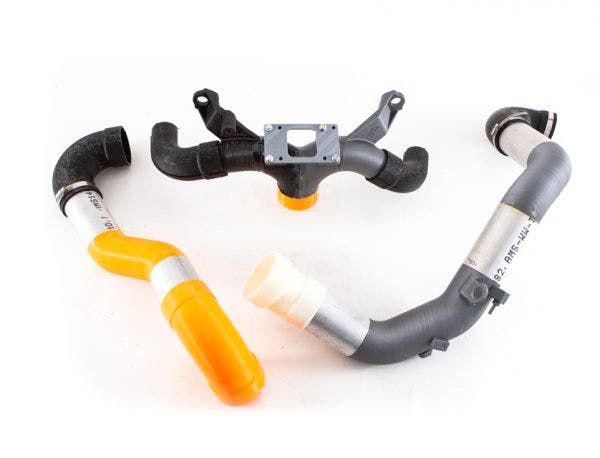
Enter the new and improved Mishimoto intercooler piping kit. While it's still in the planning phase, these bits of 3D printed plastic are the physical manifestation of the models on our engineer's work station, and the ones we can use for testing the fitment. Let's dive into the specifics of each piece.
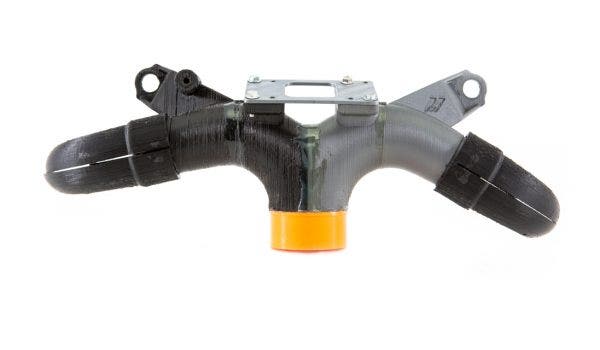
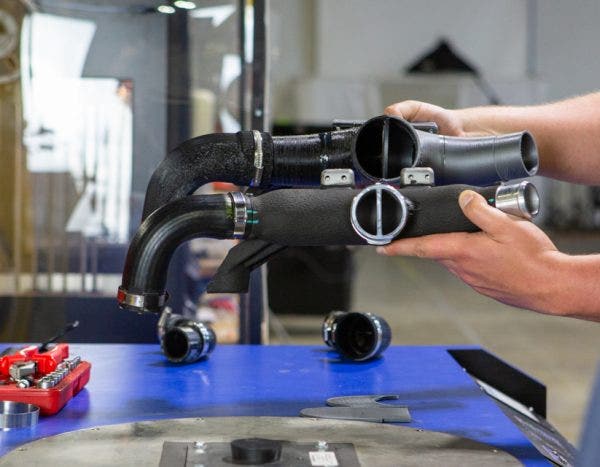
As we went over in our review of the stock system, this is an interesting take on a piping system for an engine with more than one turbo. Nonetheless, it's still going to be a choke point for the charged air, especially if the boost is turned up. Completely changing the routing of the hot-side piping is an option, but the price tag is less than ideal. Instead, we're opting for an improved component with less restrictive flow.
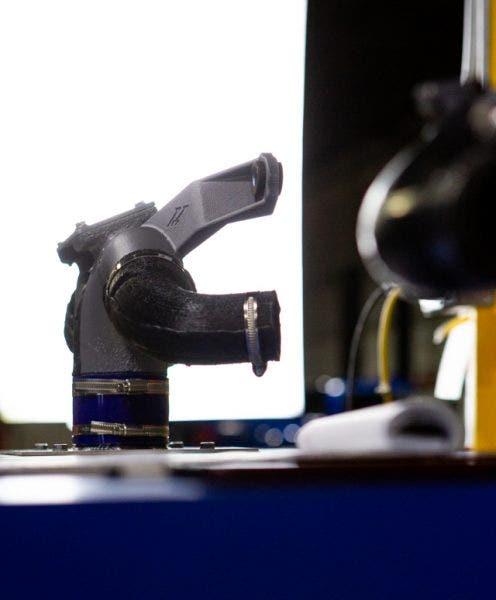
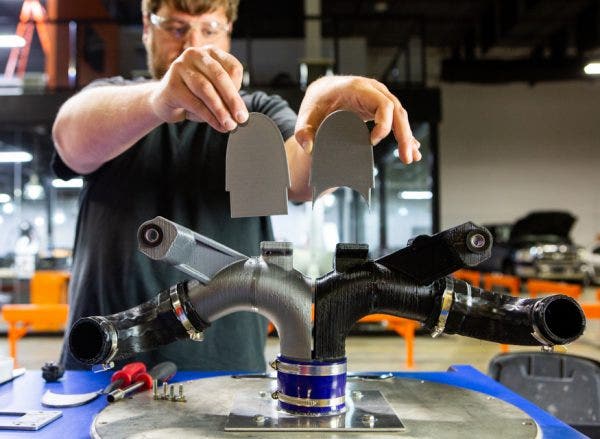
For starters, you can see that the shape is more conducive for sending the air in the right direction. We're also removing the tapering on the cast sections and letting the silicone couplers from the turbos handle that transition. Our planned hot-side pipe conjunction is still a welcome home for the factory recirculation valves, but we might have some more tricks up our sleeve for the adaptation of larger blow-off valves. Last, but certainly not least, the inner diameter is larger in order to help with the flow to the intercooler.
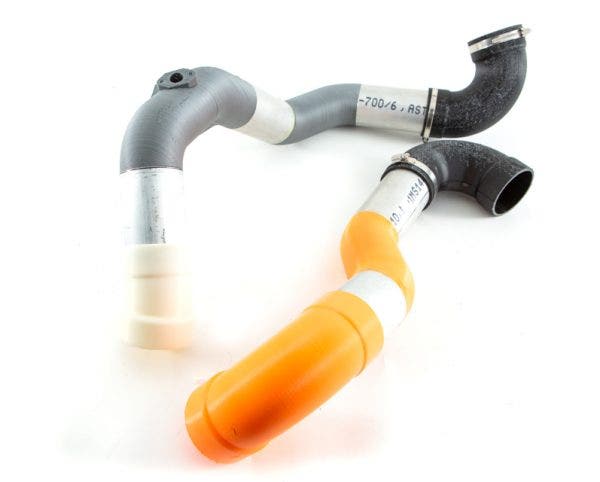
The rest of our piping kit gets a similar treatment as well. Kia already made a decent set of pipes so there is only a small amount of room for improvement, but still room nonetheless. Both to and from the intercooler, the piping will have an expanded inner diameter, and while it might not look it at this stage, will be mandrel-bent aluminum for a sturdy and lightweight charged air conduit. To top things off, we know how popular meth injection is for the Stinger, so our cold-side pipe will feature a bung for that extra bump in cooling power.
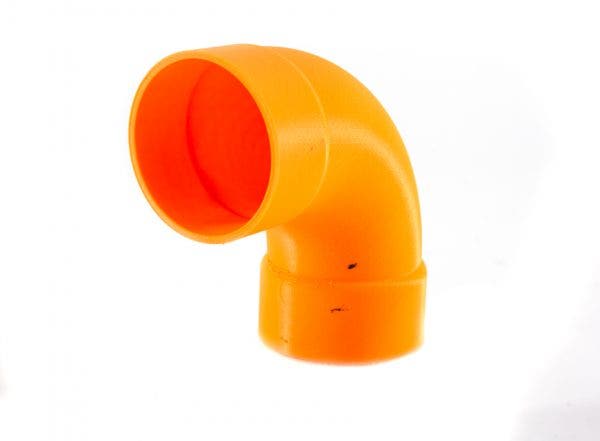
Consistency is key for flow through the system. Any change or variation in the size or shape of the piping reduces the flow and will cause some unwanted friction, which forms heat. Our engineer wanted to make sure that we were properly optimizing the flow through the system, and not only replaced the stock rubber couplers with slick and durable silicone but created a stepped design to allow for a proper connection, matching the inner diameter with the piping. This means a much more consistent channel to and from the intercooler for better management of heat and pressure.
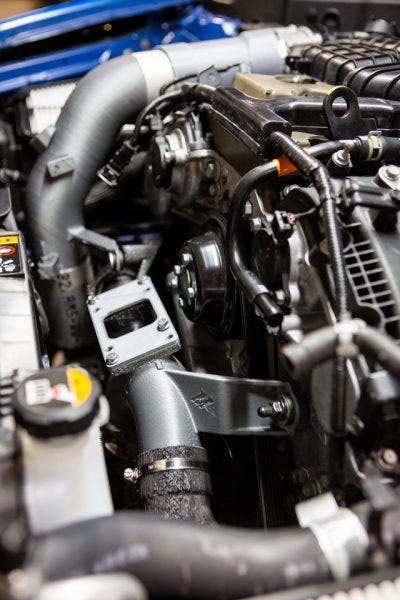
With our preliminary designs completed, its off to production for the Stinger GT intercooler kit. Don't go throwing your stock intercooler in the pond just yet. We still have some time before we see the kit in its final production form, not to mention you shouldn't litter. More to come soon!
Thanks for Reading!
-Nick





